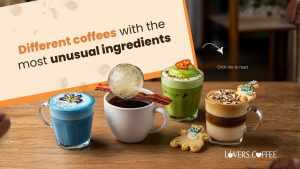
The Differences Between Immersion and Drip Coffee Brewing Methods
Table of Contents
- Immersion Coffee Brewing
- What is Immersion Brewing?
- Popular Immersion Brewing Methods
- French Press
- AeroPress
- Cold Brew
- Benefits of Immersion Brewing
- Drip Coffee Brewing
- What is Drip Brewing?
- Popular Drip Brewing Methods
- Automatic Drip Coffee Maker
- Pour-Over
- Benefits of Drip Brewing
- Comparing Immersion and Drip Brewing
- Flavor Profile
- Brewing Time
- Ease of Use
- Equipment and Clean-Up
- Conclusion
The Differences Between Immersion and Drip Coffee Brewing Methods
- Adam Smith
- 10-06-2024
- 10-06-2024
- 1836 views
- Information

Coffee brewing methods can significantly affect the flavor, strength, and overall experience of your coffee. Among the numerous brewing techniques available, immersion and drip coffee methods stand out for their unique processes and results. Understanding the differences between these two methods can help you choose the right one for your taste preferences and brewing needs. In this blog, we’ll delve into the intricacies of immersion and drip coffee brewing methods, comparing their processes, benefits, and the coffee they produce.
Immersion Coffee Brewing
What is Immersion Brewing?
Immersion brewing involves steeping coffee grounds in water for an extended period. This method allows the water to extract flavors from the coffee grounds gradually, resulting in a rich and full-bodied brew. Common immersion brewing devices include the French press, AeroPress, and cold brew systems.
Popular Immersion Brewing Methods
French Press
The French press, also known as a press pot or plunger pot, is a popular immersion brewing device. It consists of a cylindrical glass or stainless-steel container with a plunger and a metal or plastic mesh filter.
How to Use a French Press:
- Coarse grind your coffee beans.
- Add the coffee grounds to the French press.
- Pour hot water (just below boiling) over the grounds.
- Stir the mixture to ensure all grounds are saturated.
- Place the lid on the press with the plunger pulled up.
- Let the coffee steep for about 4 minutes.
- Slowly press the plunger down to separate the grounds from the coffee.
- Pour and enjoy your coffee.
AeroPress
The AeroPress is a versatile brewing device that can be used for immersion or pressure-based brewing. It’s portable and easy to use, making it a favorite among travelers and coffee enthusiasts.
How to Use an AeroPress:
- Place a filter in the AeroPress cap and rinse with hot water.
- Assemble the AeroPress and place it on a sturdy mug.
- Add finely ground coffee to the chamber.
- Pour hot water over the grounds, up to the fill line.
- Stir the mixture for about 10 seconds.
- Insert the plunger and gently press down until you hear a hissing sound.
- Dilute with hot water if desired and enjoy.
Cold Brew
Cold brew is an immersion method that uses cold water and an extended steeping time to extract coffee flavors. This method produces a smooth, less acidic coffee concentrate.
How to Make Cold Brew:
- Coarse grind your coffee beans.
- Combine coffee grounds and cold water in a large jar or pitcher (typically a 1:4 ratio).
- Stir to ensure all grounds are saturated.
- Cover and let steep in the refrigerator for 12-24 hours.
- Strain the mixture through a fine-mesh sieve or coffee filter.
- Dilute the concentrate with water or milk to taste and serve over ice.
Benefits of Immersion Brewing
- Full-bodied flavor: Immersion brewing allows for complete extraction of coffee flavors, resulting in a rich and robust taste.
- Control over steeping time: You can adjust the steeping time to achieve your desired strength and flavor profile.
- Versatility: Immersion methods can be used for hot or cold brewing, offering a range of flavor experiences.
Drip Coffee Brewing
What is Drip Brewing?
Drip brewing involves hot water passing through coffee grounds and a filter, allowing gravity to draw the brewed coffee into a carafe or mug. This method is commonly used in automatic drip coffee makers and pour-over devices.
Popular Drip Brewing Methods
Automatic Drip Coffee Maker
The automatic drip coffee maker is a staple in many households. It consists of a water reservoir, a filter basket for coffee grounds, and a carafe to collect the brewed coffee.
How to Use an Automatic Drip Coffee Maker:
- Fill the water reservoir with cold water.
- Place a paper or reusable filter in the basket.
- Add medium-ground coffee to the filter (usually one tablespoon per 6 ounces of water).
- Start the machine and let it brew.
- Once finished, pour and enjoy your coffee.
Pour-Over
The pour-over method involves manually pouring hot water over coffee grounds in a filter, typically set in a dripper placed on a mug or carafe. Popular pour-over devices include the Chemex, Hario V60, and Kalita Wave.
How to Use a Pour-Over Device:
- Boil water and let it cool slightly.
- Place a filter in the dripper and rinse with hot water.
- Add medium-fine ground coffee to the filter.
- Slowly pour hot water over the grounds, starting from the center and moving outward in a circular motion.
- Allow the water to drip through the coffee and filter into the mug or carafe.
- Continue pouring in stages until you reach the desired amount of coffee.
- Serve and enjoy.
Benefits of Drip Brewing
- Consistency: Drip brewing, especially with automatic machines, provides consistent results with minimal effort.
- Convenience: Automatic drip coffee makers are user-friendly and can brew multiple cups at once.
- Clean and crisp flavor: Drip brewing produces a clean and well-balanced cup of coffee, highlighting the nuances of the coffee beans.
Comparing Immersion and Drip Brewing
Flavor Profile
- Immersion Brewing: Produces a full-bodied and robust flavor due to the prolonged contact between water and coffee grounds. The result is often richer and more complex.
- Drip Brewing: Results in a cleaner and more nuanced flavor. The shorter extraction time highlights the subtle characteristics of the coffee beans.
Brewing Time
- Immersion Brewing: Generally requires a longer brewing time, especially for methods like cold brew (12-24 hours). French press and AeroPress methods are quicker, taking about 4 minutes.
- Drip Brewing: Typically faster, with automatic drip machines taking around 5-10 minutes and pour-over methods varying based on technique but usually within a few minutes.
Ease of Use
- Immersion Brewing: Can be more hands-on and requires monitoring steeping times. Some methods, like cold brew, involve a lengthy preparation process.
- Drip Brewing: Automatic drip machines are convenient and require minimal effort. Pour-over methods require more precision and attention but are straightforward once mastered.
Equipment and Clean-Up
- Immersion Brewing: Often involves simple equipment (e.g., French press, AeroPress) that’s easy to clean. Cold brew setups can be more cumbersome.
- Drip Brewing: Automatic machines can be bulky and require regular maintenance. Pour-over equipment is generally easy to clean, with disposable filters simplifying the process.
Conclusion
Choosing between immersion and drip coffee brewing methods depends on your personal preferences and lifestyle. If you enjoy a rich, full-bodied coffee and don’t mind a bit of extra effort, immersion brewing might be your go-to. On the other hand, if you prefer a clean, nuanced flavor and the convenience of automated brewing, drip methods could be more suitable. Experiment with both methods to discover the unique characteristics they bring to your coffee experience and find the one that best suits your taste.






















